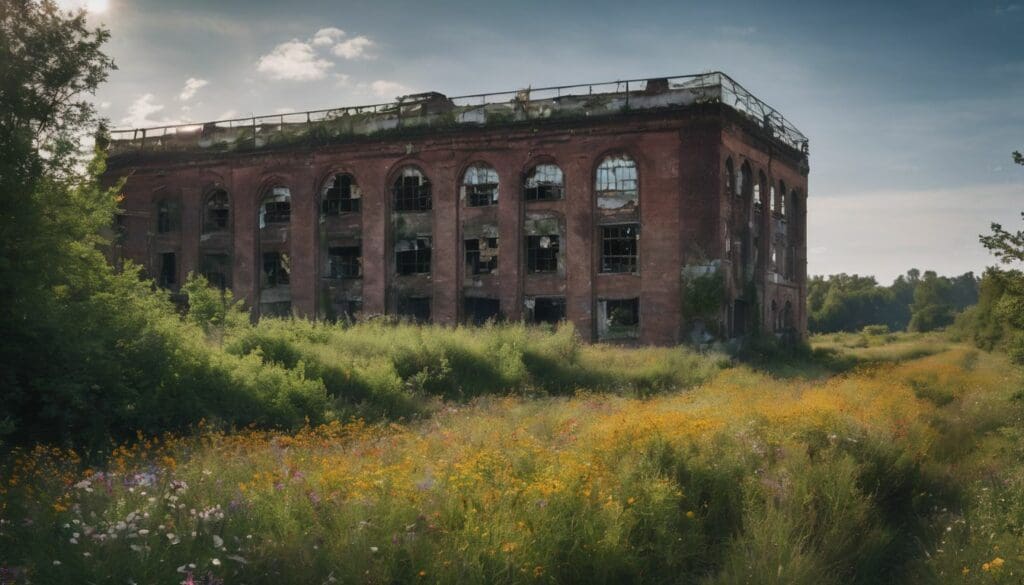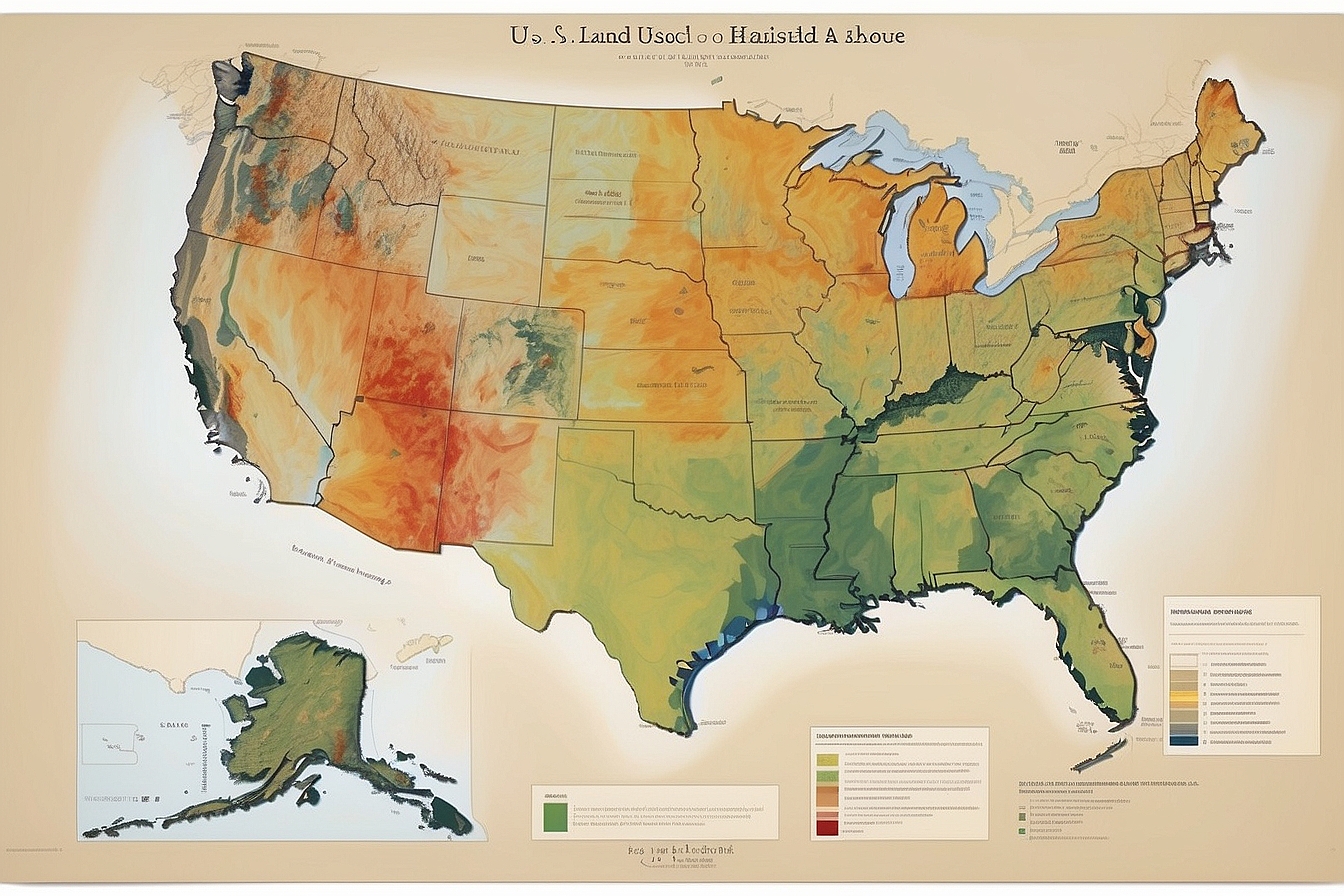Too often, the fabric of our urban landscapes is blighted by forgotten corners and tired edifices that can drag down the spirit of our neighbourhoods. We understand your disquiet surrounding these forlorn spaces; after all, close to 450,000 brownfields speckle the UK’s map like unwelcome stains on a favourite shirt.
Delving into the revival of these areas has shone a light on tangible strategies capable not merely of tidying up but wholly reimagining these spots. Join us as we explore how patches of neglect can blossom into vibrant hubs, illustrating how what was once blight can unfurl into brilliance through innovative redevelopment.
Key Takeaways
- Brownfields are underused sites contaminated by past industrial use, which we can redevelop into vibrant community spaces.
- Community – driven planning and tools like GIS mapping help identify brownfield sites for sustainable redevelopment.
- Implementing anti – gentrification measures ensures that local residents benefit from the revitalisation without displacement.
- Renewable energy sources play a significant role in transforming brownfields economically and sustainably.
- Government programs, including EPA grants and tax incentives, support the cleanup and repurposing of contaminated lands.
Understanding Brownfields and Blight
Brownfields are abandoned or underused properties, often contaminated by hazardous substances. Blight refers to the physical and economic decline of an area, caused by factors such as disinvestment and neglect.
Definition and explanation of brownfields
We often come across the term “brownfields,” which refers to pieces of land previously used for industrial or commercial purposes and now sit idle due to possible contamination. Hazardous substances from past activities can lurk in the soil and groundwater, making these sites unfit for immediate use without proper clean-up.
The mere suspicion of pollution can stigmatise these properties.
Turning our attention to brownfield redevelopment presents us with unique opportunities to revitalise contaminated sites. By cleaning up and repurposing these areas, we transform them into vibrant spaces that bring new life and economic growth to communities.
Sustainable development on former brownfields ranges from property expansion for businesses to solar power projects; it’s all about finding creative ways to give these plots a second chance while caring for our environment.
Causes of blight
Old, deteriorating buildings and infrastructure contribute to blight in urban areas. Neglect and disinvestment by property owners are major culprits too—a lack of maintenance allows properties to fall into disrepair over time.
In addition, economic downturns can lead to high vacancy rates and abandoned properties that attract crime, vandalism, and further decline. Unemployment and poverty also play a role in creating blighted areas as they limit the resources available for overall community improvement.
Pollution is another significant cause; industrial activities may have contaminated soil or groundwater on certain sites making them unsuitable for use without cleanup. Furthermore, poor urban planning decisions from the past have led to physical isolation or segregation of communities which contributes significantly to blight.
Redevelopment Opportunities and Solutions
Mapping tools and community-driven area-wide planning are essential for identifying brownfields and creating revitalisation plans. Anti-gentrification practices, use of renewable energy, and government programmes also play a crucial role in turning blighted properties into vibrant spaces.
Mapping tools for identifying brownfields
Mapping tools are essential for identifying brownfields. We can use Geographic Information Systems (GIS) to map and analyse potential brownfield areas. Using satellite imagery, GIS helps identify abandoned industrial sites, closed landfills, and other blighted properties. Additionally, aerial photography combined with GIS offers a detailed view of the landscape that aids in pinpointing potential brownfield sites. Moreover, remote sensing technologies such as Lidar can accurately detect subtle changes in topography and vegetation, which can indicate former industrial activities and environmental contamination.
Community-driven area-wide planning
When considering brownfield redevelopment, community-driven area-wide planning is imperative for ensuring equitable development and revitalisation of contaminated sites. Engaging local residents in the decision-making process helps in creating sustainable and inclusive solutions that address the needs of the community.
By involving various stakeholders, such as residents, businesses, and local government agencies, it becomes possible to develop a comprehensive strategy for turning blighted properties into vibrant spaces.
This approach also allows for anti-gentrification practices to be implemented, safeguarding against displacement and promoting green and healthy town initiatives.
Furthermore, community-driven area-wide planning facilitates adaptive reuse and green infrastructure projects on brownfield sites. It encourages the responsible cleaning up of contaminated areas while fostering environmentally friendly urban renewal efforts.
Anti-gentrification practices
Communities can implement anti-gentrification practices to ensure that the redevelopment of brownfields benefits existing residents. This includes promoting affordable housing initiatives, creating community land trusts, and enacting policies that protect long-time residents from displacement.
By engaging in collaborative decision-making processes with local stakeholders, developers can incorporate diverse perspectives into their plans and avoid contributing to gentrification.
Additionally, embracing equitable revitalisation practices such as providing job training programmes and supporting small businesses owned by minority groups can help prevent the negative impacts of gentrification while transforming blighted areas into thriving communities.
Use of renewable energy on brownfield sites
Transforming brownfield sites into vibrant, sustainable spaces involves the use of renewable energy sources to power redevelopment projects. Implementing solar panels, wind turbines, or geothermal systems on these properties helps reduce reliance on fossil fuels and minimises environmental impact.
By incorporating renewable energy on brownfields, we can create clean and efficient power sources while simultaneously revitalising blighted areas.
Additionally, integrating renewable energy solutions not only promotes sustainability but also provides economic benefits by reducing long-term operational costs for businesses and residents within redeveloped communities.
With a focus on harnessing green technology, brownfield sites can be transformed into thriving hubs that contribute positively to the environment and local economies.
Government programs for brownfield redevelopment
After exploring the importance of using renewable energy on brownfield sites, let’s shift our focus to government programmes for brownfield redevelopment. Here are some key government initiatives that support the transformation of brownfields into vibrant spaces:
- Local Brownfield Redevelopment Programmes: Many local governments offer financial assistance and technical support to developers and communities looking to revitalise brownfield sites.
- EPA Brownfields Programme: The Environmental Protection Agency (EPA) provides grants and technical assistance to assess, clean up, and redevelop contaminated properties.
- State Revolving Loan Funds: Several states have established revolving loan funds that provide low-interest loans for the cleanup and redevelopment of brownfield sites.
- Tax Incentives: Government entities may offer tax credits or deductions to incentivise private investment in brownfield revitalisation projects.
- Community Block Grants: Federal and state governments allocate funding through community block grants, which can be used for various aspects of brownfield redevelopment, including cleanup, infrastructure improvements, and community engagement.
Conclusion
Redeveloping brownfields offers a chance to revitalise blighted areas. We can turn contaminated sites into vibrant spaces for the community to enjoy. By using renewable energy and anti-gentrification practices, we create bright opportunities for all.
Let’s work together to transform blight into a brighter future for everyone involved.
FAQs
1. What is brownfield redevelopment?
Brownfield redevelopment transforms blighted properties, often contaminated sites, into vibrant spaces for community and business use.
2. How does cleaning up contaminated sites help a community?
Cleaning up these sites gets rid of hazards, making areas safe and ready for new development that can brighten the local area.
3. Can brownfield redevelopment include anti-gentrification practices?
Yes, it’s possible to redevelop in ways that add value without displacing locals by including anti-gentrification practices in the planning process.
4. What kind of opportunities come from turning blight into bright spaces?
Redevelopment programmes aim to create job opportunities, inviting green spaces for recreation, and new commercial hubs which benefit the whole community.





